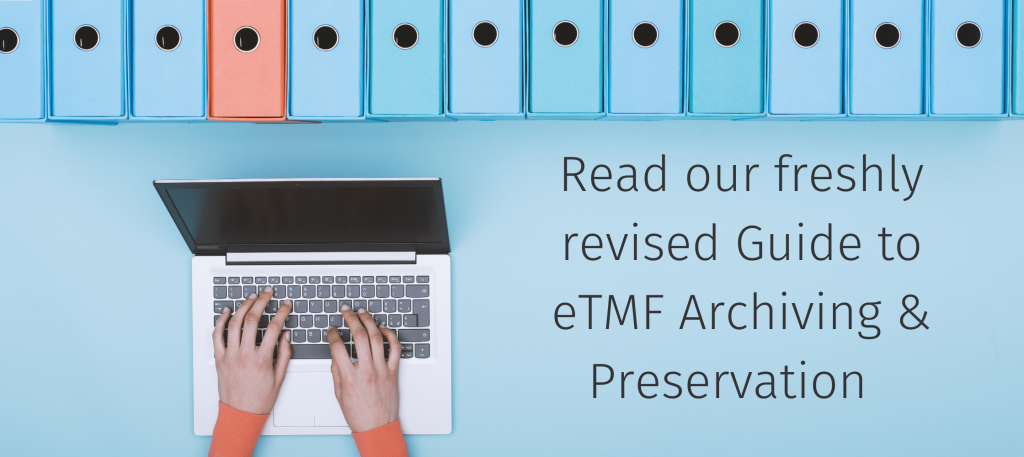What is the Trial Master File (TMF)?
In essence, the TMF is a collection of documents which must be collected throughout the conduct of a trial to reflect that that the trial was managed appropriately and successfully.
The ICH Guideline for Good Clinical Practice outlines the documents which are considered ‘essential’ along with other documents and records which must also be retained.
These documents may be subject to a regulatory inspection and therefore, must be able to reflect the conduct of the trial in question, as well as enabling the quality of the data to be evaluated.
An electronic Trial Master File – or an eTMF – is simply an electronic way of managing your trial documents. It’s become increasingly popular over recent years as the preferred way to process, manage and store data recorded in the TMF.
What’s the purpose of the TMF?
Its purpose is that it should allow for a clinical trial to be reconstructed, evaluated and/or validated.
It’s easiest to think about this as the story of a trial i.e. what happened? When? What were the results? What must we know about?
Why is the TMF important?
The TMF is fundamental to complying with regulations across the world (depending on where the trial is conducted and where the drug will be marketed and sold.)
Additionally, it must contain certain documents which have been marked as ‘essential’ within the ICH Guideline for Good Clinical Practice Section 8.
If a TMF fails to contain these documents, then you won’t be complying in accordance with GCP and that organisation in question is liable for fines, drug delays, reputational damage and more.
Who is responsible for the TMF?
The sponsor of the trial is ultimately responsible for the TMF and will be responsible for retaining that data long into the future.
Although, it is quite common to outsource aspects of your clinical trial and as such, the CRO will be responsible for all data, documentation and maintaining the TMF during the course of the trial.
Once this trial has finished however, this responsibility is transferred back to the Sponsor. If you’re interested in reading more on this, then our 3-part series may be of interest:
What regulations apply to the TMF?
Keep an eye out for our follow-on blog discussing why the TMF is not a suitable medium for clinical data at the end of a trial.
Many differing regulations apply to the retention of the TMF depending on where a drug has been trialled and/or where it will be marketed.
We’ve broken some of the key legislations down into the below guides which you may find helpful:
Within these regulations, different retention periods are required. The longest and newest requirement is the retention period of 25 years necessitated by EU regulation 536/2014.
When does the retention period start?
According to Article 58 of EU regulation 536/2014, the retention period begins at the ‘end’ of the trial. However, it is up to the sponsor to define when the end of the trial will commence. This is usually classified as the point when the last patient has visited the last site for the final time.
It’s crucial that the sponsor defines when their ‘end point’ will commence within their protocol. 

Harriet Clark
Harriet is the Content Marketing Manager at Arkivum and joined the business in 2021. She is responsible for the creation of all marketing and sales content. Harriet is an Associate member of the Chartered Institute of Marketing.
Get in touch
Interested in finding out more? Click the link below to arrange a time with one of our experienced team members.
Book a demo